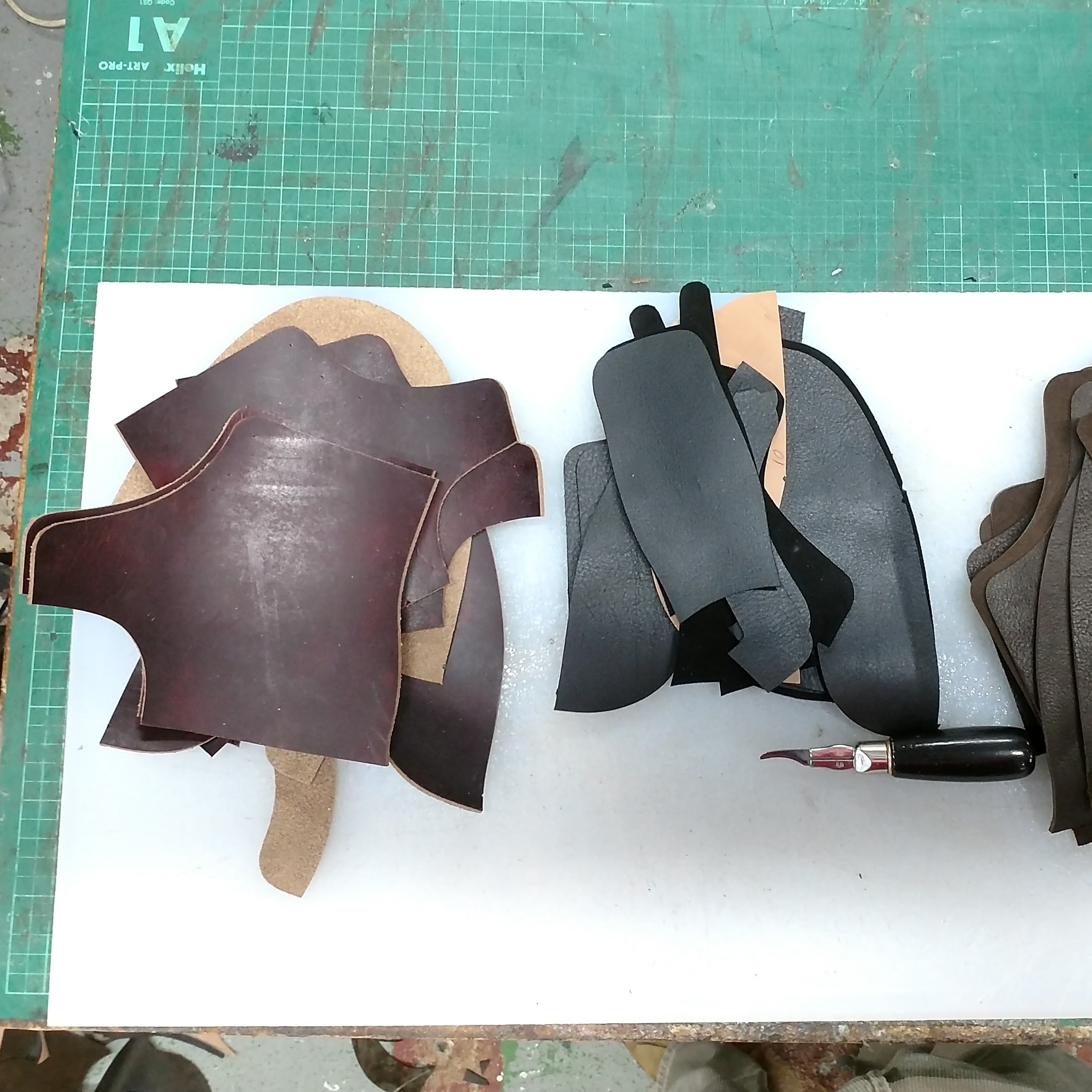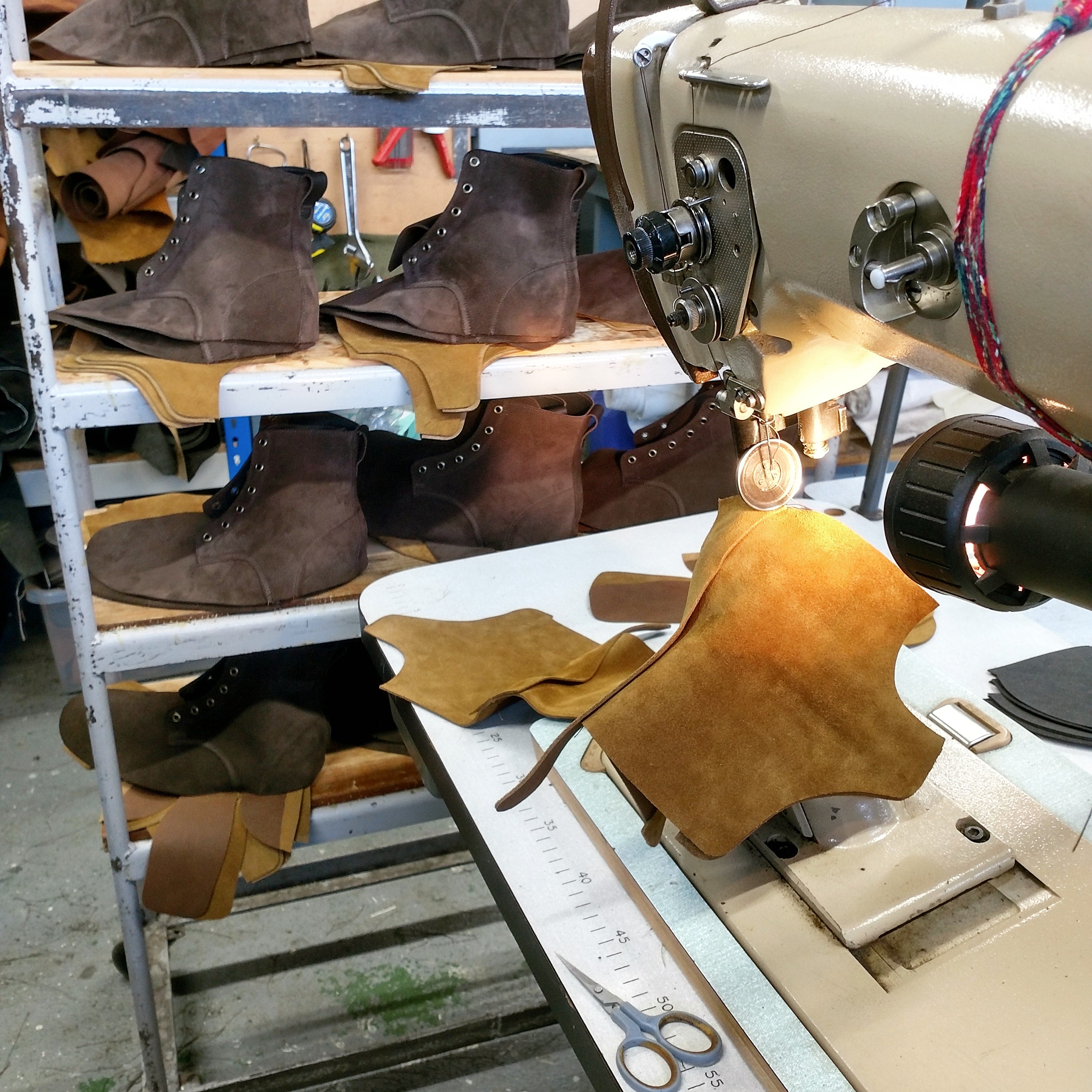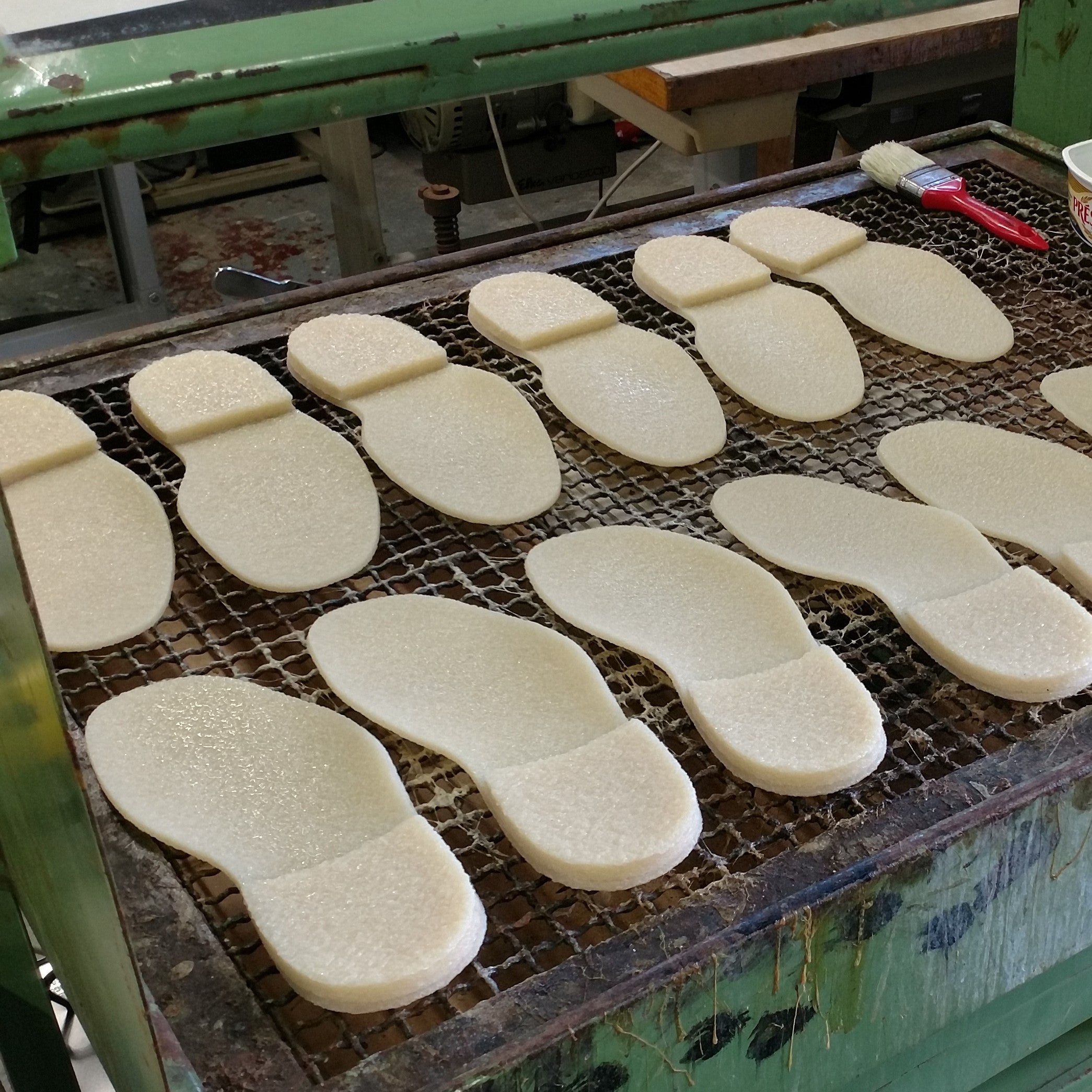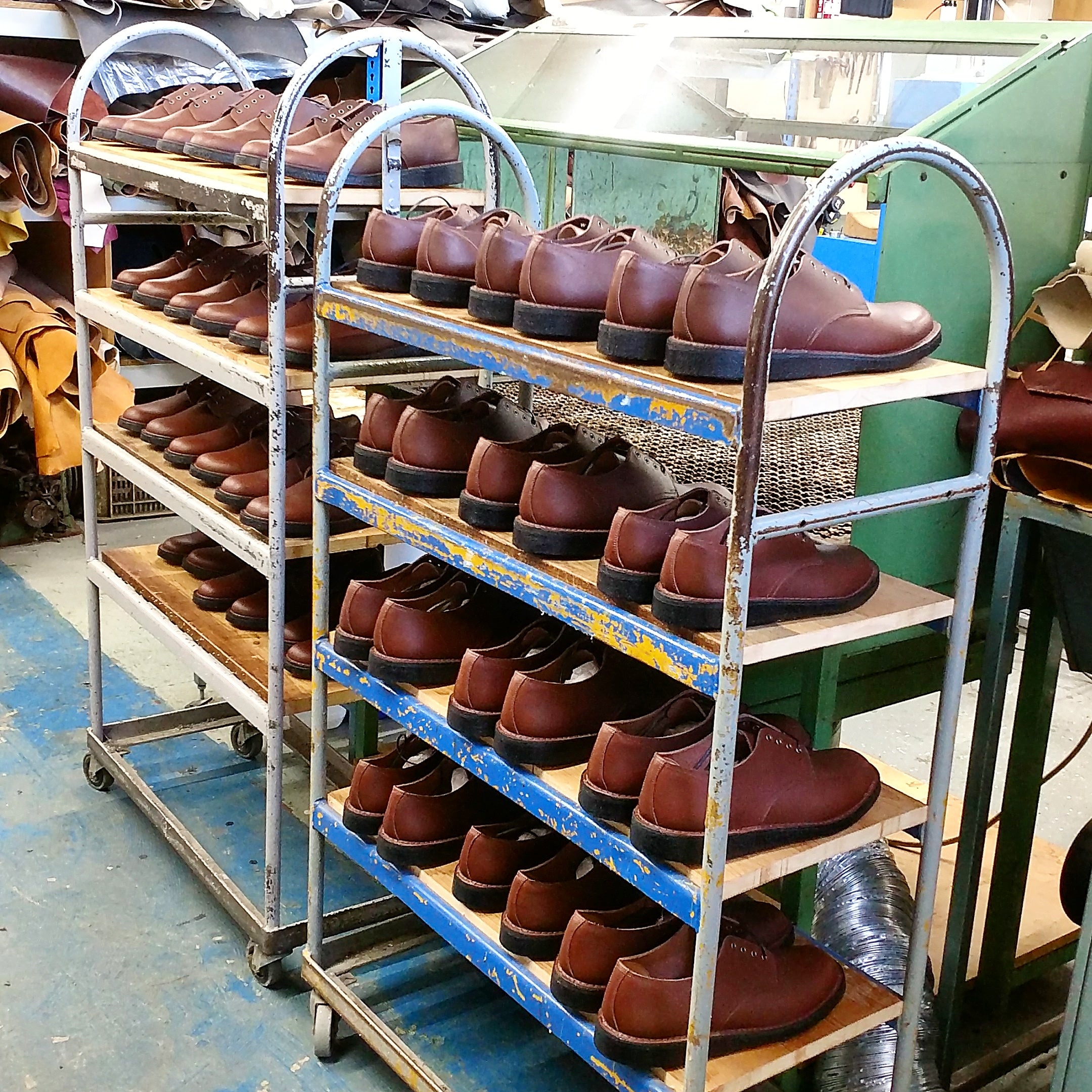
The Stitchdown Construction

Our shoes are crafted using the stitchdown construction, a method rooted in British shoemaking heritage and renowned for its durability and comfort. Unlike more common constructions where the upper leather turns underneath the insole, stitchdown turns outwards and is stitched directly to the runner: two bonded layers made up of the leather insole and rubber midsole.
The construction is flexible and repairable when crafted with high quality materials, and is one of the more labour intensive shoe constructions to manufacture. Traditionally, the best factories would specialize in only one style of construction and pursue mastery. Today, Jadd Shoes is the UK's only remaining specialist manufacturer of stitchdown footwear.
Desert Boots and Shoes
We've made desert boots for 25 years, and continually studied our competitors offerings. Our leathers are consistently higher grade throughout, and we use thicker leather insoles which are buffed full grain rather than splits. Our build is more refined and resilient than any others we've seen.
Despite that, our boots may cost less - but consider that a reflection of principle, not compromise. We keep our margins modest, there's no middle man, nor a bloated marketing budget inflating the prices. Packaging is minimal by design: protective enough for safe delivery, simple enough for easy recycling.
We are equipped and trained in volume precision manufacturing having previously been a supplier to Clarks International and Solovair - this means our operations are highly efficient, so although the Jadd product features top-tier hand work and refinement, our efficient working practices are transferable; to make the best product possible in the best way possible.

The Process
Clicking
We begin with the cutting process, known in the industry as 'clicking', due to the sound the blade makes as it leaves the cutting board. In large factories, the clicking room would have had many workers all cutting by hand with a traditional clicking knife, all emitting little 'clicks' as each piece was cut.
We continue this tradition of hand cutting, having templates made from either card or plastic which are skilfully cut around with a special knife for a clean and precise edge. The blades are individually shaped from old hacksaw blades, which gives us a good balance of flexibility and edge retention when sharpening.
For bulk production, we also use a 'clicking press', which is a powerful hydraulic machine which stamps out the leather pieces like a giant cookie cutter.

The Process
Closing
All the leather pieces from clicking are now prepared for the sewing operations, where by the flat two-dimensional pieces will be 'closed' into a three-dimensional shape which is called the 'upper'. The leather edges will be thinned by shaving slivers of leather off so that the seams lie flat, and any beading and edge inking processes will also be done before the pieces are stitched together.
We use several types of leather machines and sewing machines for this process, each one requiring a high level of understanding and skill to operate successfully. This is a hand made process with no automation.

The Process
Lasting
This is where the shoe really starts to take shape. The closed uppers have their stiffeners inserted in the toe and heel area, and are then placed over a plastic shoe mould called a 'last'. Using the assistance of powerful machinery, the leather upper is grabbed by pincers which the operator controls individually with corresponding levers, to pull the upper tightly over the last whilst keeping it central.
A good eye and feel is needed to keep the upper central and tight to the last, but not to over stretch the upper which would result in a loss of proportion, and even burst seams.
Again, there is no automation in this process.
The Process
Stitching
After the upper is lasted, the upper is stitched directly to a mid-sole using a special outsole stitcher. This is where the 'stitchdown' process takes its name.
The stitch is made using heavy thread, by a 'lock stitch' process, which is the strongest. If one stitch should become damaged or break, the rest will remain in place and strong, especially because the stitches are also cemented in underneath as well.
Our standard thread colours are black, brown, and natural, but we have other colours in stock available on request, such as red, yellow, orange, and various shades of green.

The Process
Sole Laying
The soles are prepared for cementing onto the lasted and stitched uppers.
After the soles are attached to the lasted uppers with heat and pressure, highly skilled trimming and finishing operations follow.
We use natural plantation rubber crepe soles, as pictured, for the traditional Desert boot specification, with Vibram and other sole options available.

The Process
Shoe Room
The last step in the production process, here the shoes have their lasts removed, and are inspected, cleaned, branded and padded heel socks inserted, laced, and boxed.
The shoes may be given a cream polish or wax treatment to enhance or preserve the finish of the leather.
The lasts can now be used to start another batch of shoes. We manufacture shoes in multiples of 12, in order to keep our shoe racks full for maximum efficiency as they are moved around the factory between processes.
